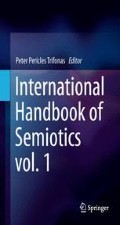Abstract
This chapter examines humankind’s relationships to nature and the natural, their symbolic meanings for humankind’s quality of life, and the impacts these have on our lives today and as a future legacy in an evolving world picture. The intent is to question and develop an understanding of the complexities and contradictions in the physical and psychological realm for a way forward that supports a healthy and balanced relationship between humankind, landscape, park and nature. The evolution of these relationships and influences has created an oscillation in our somatic and psychic equilibrium. In humankind’s desire to live well, our honouring of earth as oikos, the house of being, is examined.
The human spirit’s symbiotic relationship with the nature and our unconscious drive for balance can sit in opposition with the symbolic value and commodification of nature. Nature is the essence of life and survival, and the contradictions in our relationships with nature sublimate the challenges of moving forward on a healthy earth with healthy inhabitants in health and wellness. For the balance of nature, the sign of nature looks at the shift or reappropriation of nature as a noneconomic entity in our thoughts and actions, particularly as technology, urban growth and increased density apply stress and imbalance to humankind, nature, ecosystems and the dynamic flows of the natural world. Oikos: Sign of nature is a look at nature and its essence to life and being, and living in harmony with the land.
I went to the woods because I wished to live deliberately, to front only the essential facts of life, and see if I could not learn what it had to teach, and not, when I came to die, discover that I had not lived. (went David Thoreau, Walden: Or, Life in the Woods)
Access this chapter
Tax calculation will be finalised at checkout
Purchases are for personal use only
Reference
Baudrillard, Jean. 1994. Simulacra and simulation. (The Body in Theory: Histories of Cultural Materialism) (trans: Glaser, S.F.). Ann Arbor: University of Michigan Press.
Carroll, John W. 2012. “Laws of Nature”, The Stanford Encyclopedia of Philosophy (Spring 2012 edition), ed. Edward N. Zalta. http://plato.stanford.edu/archives/spr2012/entries/laws-of-nature/.
Derrida, Jacques. 1974. Of grammatology (trans: Gayatri Spivak). Baltimore: The Johns Hopkins University Press.
Derrida, Jacques. 1989. Of spirit: Heidegger and the question (trans: Geoffrey Bennington and Rachel Bowlby). Chicago: Chicago University Press.
Freud, S. 1950. Beyond the pleasure principle (trans: Strachey, J.). London: Hogarth Press.
Freud, Sigmund. 2001. The Uncanny (trans: Alix Strachey). In The Norton anthology of theory and criticism, eds. Vincent B. Leitch, William E. Cain, Laurie A. Finke, Barbara E. Johnson, John McGowan, and Jeffrey J. Williams, 929–952. 1st ed. New York: W. W. Norton & Company, Inc.
Heidegger, Martin. 1971. The thing. In Poetry, language, thought (trans: Hofstadter, A.), 165–182. New York: Harper and Row.
Heidegger, M. 1977. The question concerning technology. In The question concerning technology and other essays (trans: Lovitt, W.), 3–35. New York: Harper and Row.
Jung, C. G., ed. 1978. Approaching the unconscious. In Man and his symbols. London.
Kant, Immanuel. 1951. Critique of judgment (trans: Bernard, J. H.). New York: Macmillan.
Kaplan, R., and S. Kaplan. 1989. The experience of nature: A psychological perspective. New York: Cambridge University Press.
Kaplan, R., and S. Kaplan. 2005. Preference, restoration, and meaningful action in the context of nearby nature. In Urban place: Reconnecting with the natural world, ed. Barlett, P. F., 271–298. Cambridge: MIT Press.
Roszak, T., M. E. Gomes, and A. D. Kanner. 1995. Ecopsychology, restoring the earth, healing the mind. San Francisco: Sierra Club Books.
Shahid Naeem, Chair, F.S. Chapin III, Robert Costanza, Paul R. Ehrlich, Frank B. Golley, David U. Hooper, J.H. Lawton, Robert V. O’Neill, Harold A. Mooney, Osvaldo E. Sala, Amy J. Symstad and David Tilman, Fall 1999. Biodiversity and Ecosystem Functioning: Maintaining Natural Life Support Process, Ecological Society of America, Issues in Ecology, Fall 1999, Number 4.
Toynbee, Arnold. 1959. Hellenism: The history of a civilization. Oxford: Oxford University Press.
Author information
Authors and Affiliations
Corresponding author
Editor information
Editors and Affiliations
Rights and permissions
Copyright information
© 2015 Springer Science+Business Media Dordrecht
About this chapter
Cite this chapter
Mackars, G. (2015). Oikos: The Sign of Nature. In: Trifonas, P. (eds) International Handbook of Semiotics. Springer, Dordrecht. https://doi.org/10.1007/978-94-017-9404-6_23
Download citation
DOI: https://doi.org/10.1007/978-94-017-9404-6_23
Published:
Publisher Name: Springer, Dordrecht
Print ISBN: 978-94-017-9403-9
Online ISBN: 978-94-017-9404-6
eBook Packages: Humanities, Social Sciences and LawPhilosophy and Religion (R0)

